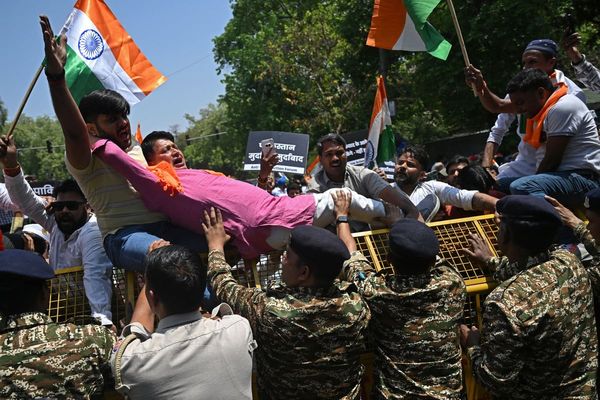A new Guardian analysis of Institute for the Study of War data shows that, after once having seized as much as 51,000 sq miles (132,000 sq km) of Ukrainian land, Russia has since lost a fifth of this.
It now controls 40,000 sq miles of Ukrainian land, entirely in the south and east. This is 17% of Ukraine – a country of 230,000 sq miles, or twice the size of Italy.
The analysis shows that Russia still controls a majority of the land in each of the four regions it attempted to illegally annex last year — Luhansk, Kherson, Zaporizhzhia and Donetsk.
However, since the annexation on 30 September, Russian forces have lost land in all of these regions except for Zaporizhzhia. This is especially clear in Kherson, where Russia controlled 93% of its land in June but now holds 73%.
The trend has reversed slightly in Donetsk over the last two months. After controlling 51.5% in mid-December, Russia is pushing more in this eastern area and now controls 54% of the land.
The Russians have never held as much Ukrainian territory as they did in late March last year, after which they quickly lost land in the north around Kyiv and along the Belarusian border.
A period of months then ensued when the frontlines stayed relatively static. This only changed in September 2022, when the Ukrainians forced the Russians back on multiple fronts.
In total, five regions – Chernihiv, Kyiv, Sumy, Zhytomyr and Mykolaiv – have fully expelled Russian forces, after hundreds of square miles of their territory had been controlled by the Russians at some point. While not fully expelled from Kharkiv, Russian forces control just 1% of the region’s land after successful Ukrainian counterattacks.
The most recent major Russian setback was the loss of the city of Kherson, from which they retreated in mid-November. This followed the territorial losses in the northern withdrawal in April and in Kharkiv in September.
Since then, Russia has made some modest gains in Donetsk over the winter, with attritional fighting centred on Bakhmut. Officials expect Russia to step up offensive efforts in the coming weeks.
As of Sunday 19 February, Russia controlled just over 40,600 sq miles in Ukraine, about 17% of Ukraine’s total landmass and roughly equivalent to the size of Iceland.
Notes
Territory estimates are based on an analysis of the daily control files from the Institute for the Study of War (ISW). These assess, on a daily basis, the extent of the land controlled or contested by Russian forces. Areas marked “Russian operations” on the map refer to areas that the ISW assesses Russian forces have operated in or launched attacks against but do not control. Areas marked “Ukraine regained control” on the map refer to areas that the ISW assesses Ukrainian forces have liberated but are still actively contested to some degree. In the last chart, other regions include Zhytomyr, Mykolaiv, Sevastopol, Dnipropetrovsk and Kyiv city.







